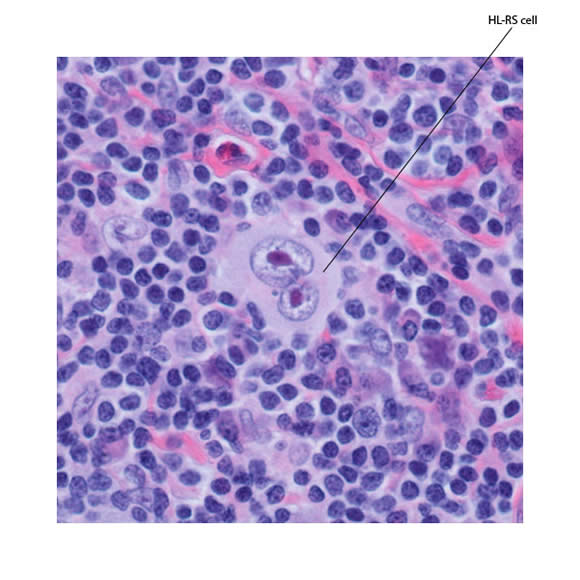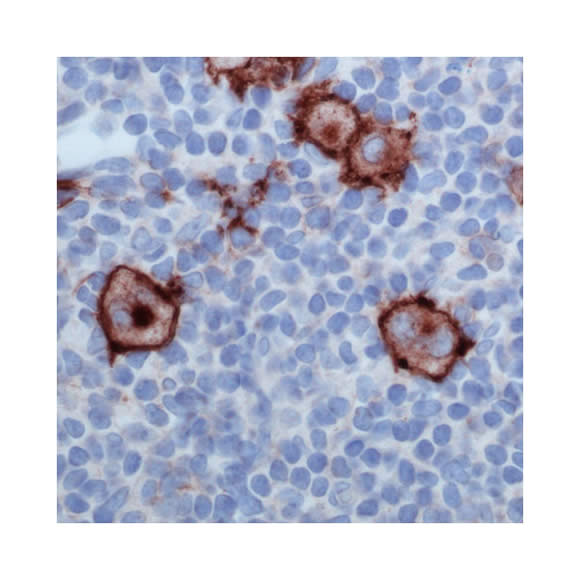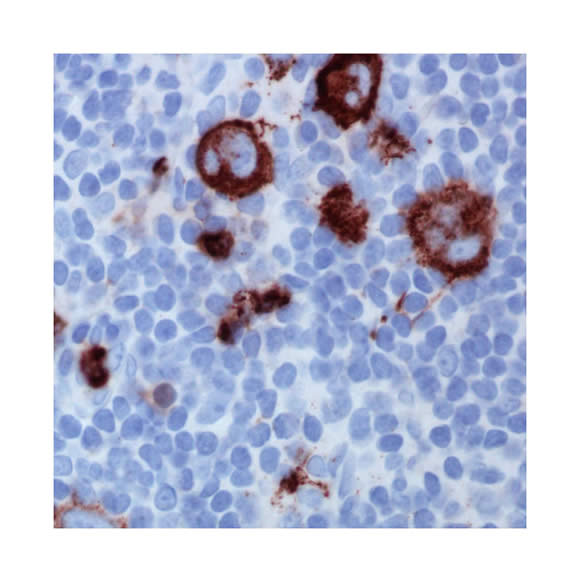Histopathology
The pathologic diagnosis of classical Hodgkin lymphoma is based on the detection of:
Hodgkin Lymphoma Reed-Sternberg cells (RS cells):
- Malignant cells of Hodgkin lymphoma and the diagnostic cell of classical Hodgkin lymphoma.
- Minority of cells present (0.1 - 10% of total - typically about 1%)
- In the midst of other reactive inflammatory cells:
- histiocytes, plasma cells, lymphocytes, eosinophils & neutrophils
- PLUS fibrosis in nodular sclerosis (due to cytokine release)
- Reed-Sternberg cells are derived from clonal proliferation of B lymphocytes.
The microscopic appearance of a binucleated Hodgkin Lymphoma Reed-Sternberg cell (HL-RS cell - usually called RS cell):

- There are classic RS cells and variant RS cells:
- Mononuclear variants
- Lacunar cell - seen in nodular sclerosis subtype
- Mummified cells
Pathologic findings of a classic Hodgkin Lymphoma Reed-Sternberg (RS) cell:
Malignant cell |
Hodgkin Lymphoma Reed-Sternberg (RS cell) |
Cellular origin |
|
Cellular appearance |
|
Immunophenotyping of B cell antigen |
Positive:
Negative:
|
Proportion of cellular composition |
Reed-Sternberg cells:
Other inflammatory cells (abundant):
|
Positive CD30 stain (brown) in RS cells:
Positive CD15 stain (brown) in RS cells: 
Constitutive activation of nuclear factor kappa B (NfkB) pathway to prevent apoptosis is thought to be the mechanism of formation of malignant RS cells.
As a result of this activated pathway, RS cells overproduce tumor necrosis factors, cytokines and chemokines.
Typically, RS cells appear either in classical form or in other variants such as lacunar or reticular.
RS Cell form |
Description |
Classical |
|
Lacunar |
|
| Mummified cells |
|

